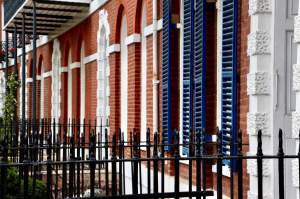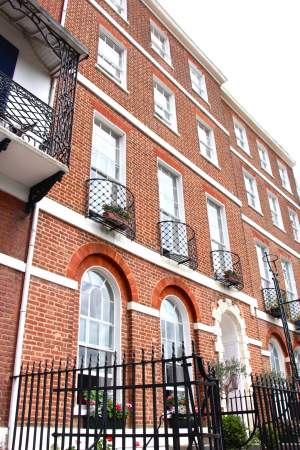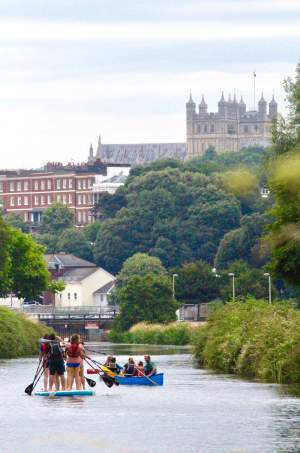Colleton Crescent: 5 Things You Didn't Know
If you have already visited IPC, you will have felt the magic of walking through the school’s front door for the first time. But how much do you really know about our historic home?

1. It is over 200 years old
Our beautiful building has witnessed many important moments in British history. Built between 1804 and 1818, Colleton Crescent has been standing here for a whole two centuries, seeing in the birth of the national railway network in the 1840s, the installation of the Victorian tram system in the late 1890s, and the reigns of nine different English monarchs!
In 1813 the 75th birthday of ‘mad’ King George III even saw a celebratory 21-gun royal salute fired on the Crescent’s front lawn.

2. It has high-level protected status
Colleton Crescent is Grade II* listed. According to the British Government it is a ‘particularly important building of more than special interest’. This means it has been as recognised as architecturally significant, with many period features.
Designed by the renowned English architect Matthew Nosworthy, the nine tall four-storey town mansions are made from red brick, with white Coade ‘stone’ – in fact a type of ceramic – surrounding the doorways. Inside the high ceilings are decorated with plaster roses and coving, and cast iron gas lamp holders stand proudly outside on the pavement.
3. It is an example of the famous English ‘Crescent’
If you stand back from IPC you can see how Number 7 and its neighbours form an unusual shape. A ‘crescent’ is built when multiple terraced houses, normally built in straight rows, are laid out in an arc, creating an impressive curved facade.
This elegant type of architecture is a hallmark of the Georgian ‘Regency’ period (1713-1830). The nearby city of Bath is home to the country’s largest and most famous examples of English crescents, including the famous golden-stoned ‘Royal’ Crescent.

4. It enjoys stunning views over the River Exe
Colleton Crescent sits grandly on a red sandstone riverside cliff, high above the River Exe and the historic Quay – once a bustling trading port dealing in wool, naphtha oil and Iberian wine.
From the top windows of the building you can look out over the Exe Valley and the breathtaking Haldon Hills, the natural ridge between the river and Dartmoor National Park. It is such picturesque countryside views which set the Exeter apart from other cities.
5. It has been painted by J.M.W. Turner
We think Exeter is beautiful - and Joseph William Mallord Turner thought so too. Upon his extended visit to Exeter and the South West in 1811, the famous painter made many sketches of Exeter, including the Quay from the western bank.
Turner painted up the scene sixteen years later in 1827 in his renowned Romanticist style. In those times Colleton Crescent was a defining feature of Exeter’s skyline – it is clearly visible in Turner’s painting (and a later engraving by T. Jeavons, below). Today both the painting and the engraving can be viewed online on the Tate gallery website, or they can be visited individually in person at the Tate Gallery in London and the Manchester Art Gallery.
If you would like to know more about 7 Colleton Crescent just ask our Building Manager Andy for a tour! He is always happy to show people around the 'nooks and crannies' of this wonderful building.

Our school has been proud to call Colleton Crescent home since 2005 and have welcomed thousands of teachers and students through its doors. Will you be next? Come and experience our historical setting for yourself by joining one of our courses.
Comments 
-
8 Important British Christmas Traditions That You Might Not Know About
December 21 2018 -
Where to try Fish and Chips in Exeter
July 31 2018 -
Best Bookshops in Exeter
July 23 2018



Thursday, April 25, 2019